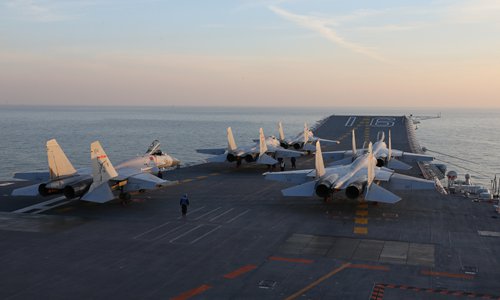Intrepid
Major
Not packed awaiting departure as on all other pictures before, but with their nose facing to the island after landing.Packed
Last edited:
Not packed awaiting departure as on all other pictures before, but with their nose facing to the island after landing.Packed
Additional to an instrument approach system with localizer and glidepath. Low visibility procedures may be more difficult than night procedures. The most demanding task may be night landings in low visibility with heavy rain, strong winds, gusts and a rough seastate. But they will start with an easier task like a calm moonlight night under a clear sky.I'm not familiar with how night landings are done on aircraft carrier but I suppose just as on landed runways, pilots are assisted by PAPI (Precision Approach Path Indicators) lightings during any landing and probably additional runway lightings during bad weather and night operation.

I'm not familiar with how night landings are done on aircraft carrier but I suppose just as on landed runways, pilots are assisted by PAPI (Precision Approach Path Indicators) lightings during any landing and probably additional runway lightings during bad weather and night operation.
Yes. It's called OLS or meatball. Biggest difference is it is gyroscopically stabilized and can be manually controlled usually by the LSO.
If you install a regular PAPI on a carrier the plane will crash everytime because it's not stabilized for deck heaves and pitches and you have no human intervention. Every LSO especially one trained for night traps is a highly experienced naval aviator with hundreds of night landings under his belt.
I think the next gen landing system is in the works though. It wouldn't be a physical device on the deck but HUD base or projected onto HMDs.
Clearly shows that they can use the J-15, without a refuel, to take off with at least one ASM from the ski-jump, and then fire it and strike a taret at sea. Great video.I went one page back, didn't see this vid here (says Published on Dec 17, 2016):
Wouldn't that mean the brain smacks against the front of the skull without the neck and back muscles to shock-absorb some of the forward momentum?Having watched the video posted by Jura, an idea came to my mind: when an airplane is arrested landing, would it help if the pilot's seat belt can automatically tighten up to keep him from charging forward?
LOL. True. Didn't think of that.Wouldn't that mean the brain smacks against the front of the skull without the neck and back muscles to shock-absorb some of the forward momentum?
